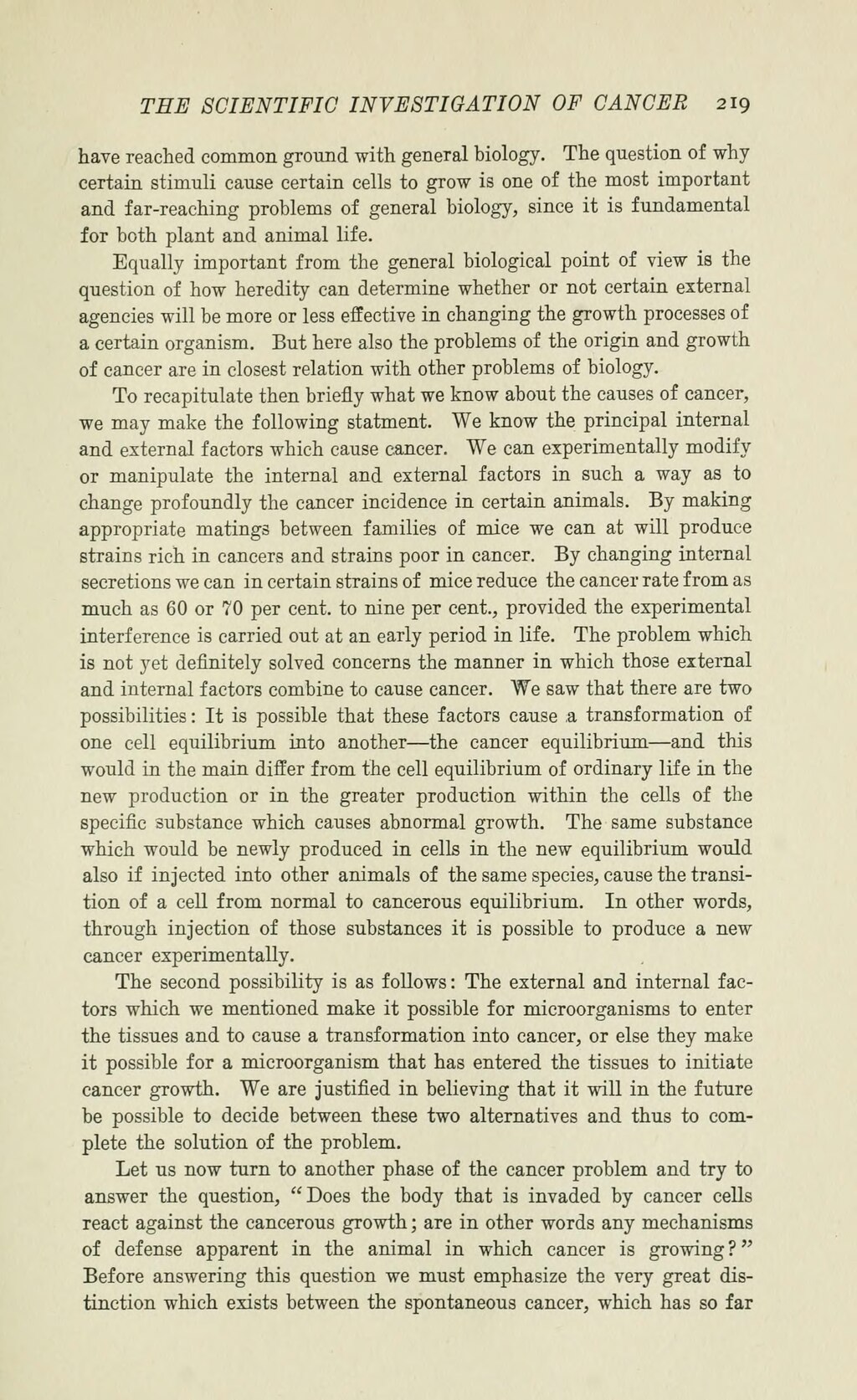THE SCIENTIFIC INVESTIGATION OF CANCER 219
have reached common groimd with general biology. The question of why certain stimuli caose certain cells to grow is one of the most important and far-reaching problems of general biology, since it is fundamental for both plant and animal life.
Equally important from the general biological point of view is the question of how herediiy can determine whether or not certain external agencies will be more or less effective in changing the growth processes of a certain organism. But here also the problems of the origin and growth of cancer are in closest relation with other problems of biology.
To recapitulate then briefly what we know about the causes of cancer, we may make the following statment. We know the principal internal and external factors which cause cancer. We can experimentally modify or manipulate the internal and external factors in such a way as to change profoundly the cancer incidence in certain animals. By making appropriate matings between families of mice we can at will produce strains rich in cancers and strains poor in cancer. By changing internal secretions we can in certain strains of mice reduce the cancer rate from as mnch as 60 or 70 per cent, to nine per cent., provided the experimental interference is carried out at an early period in life. The problem which is not yet definitely solved concerns the manner in which those external and internal factors combine to cause cancer. We saw that there are two possibilities : It is possible that these factors cause a transformation of one cell equilibrium into another — ^the cancer equilibrium — ^and this would in the main differ from the cell equilibrium of ordinary life in the new production or in the greater production within the cells of the specific substance which causes abnormal growth. The same substance which would be newly produced in cells in the new equilibrium would also if injected into other animals of the same species, cause the transi- tion of a cell from normal to cancerous equilibrium. In other words, through injection of those substances it is possible to produce a new cancer experimentally.
The second possibility is as follows : The external and internal fac- tors which we mentioned make it possible for microorganisms to enter the tissues and to cause a transformation into cancer, or else they make it possible for a microorganism that has entered the tissues to initiate cancer growth. We are justified in believing that it will in the future be possible to decide between these two alternatives and thus to com- plete the solution of the problem.
Let us now turn to another phase of the cancer problem and try to answer the question, ^'Does the body that is invaded by cancer cells react against the cancerous growth ; are in other words any mechanisms of defense apparent in the animal in which cancer is growing ? Before answering this question we must emphasize the very great dis- tinction which exists between the spontaneous cancer, which has so far
�� �
